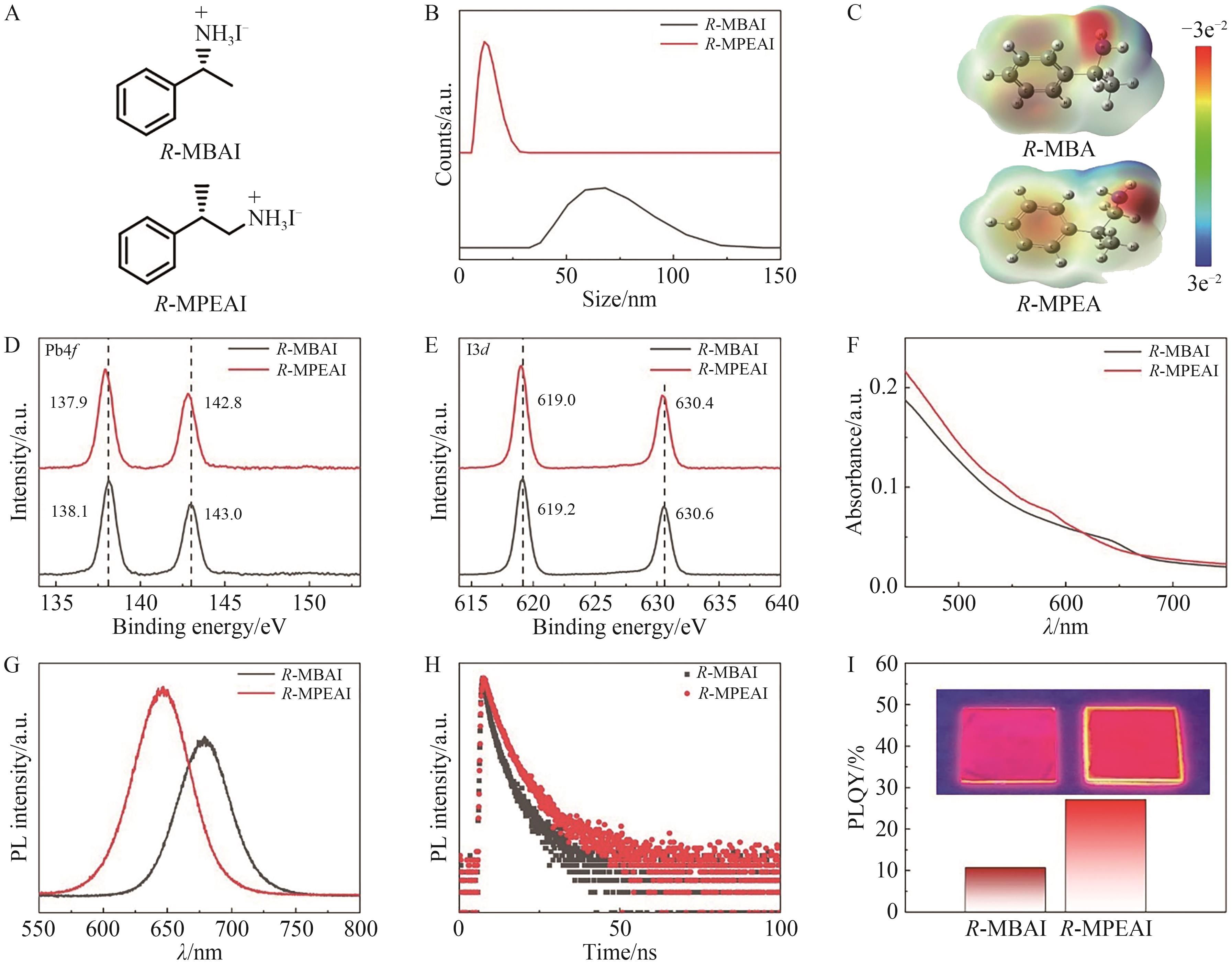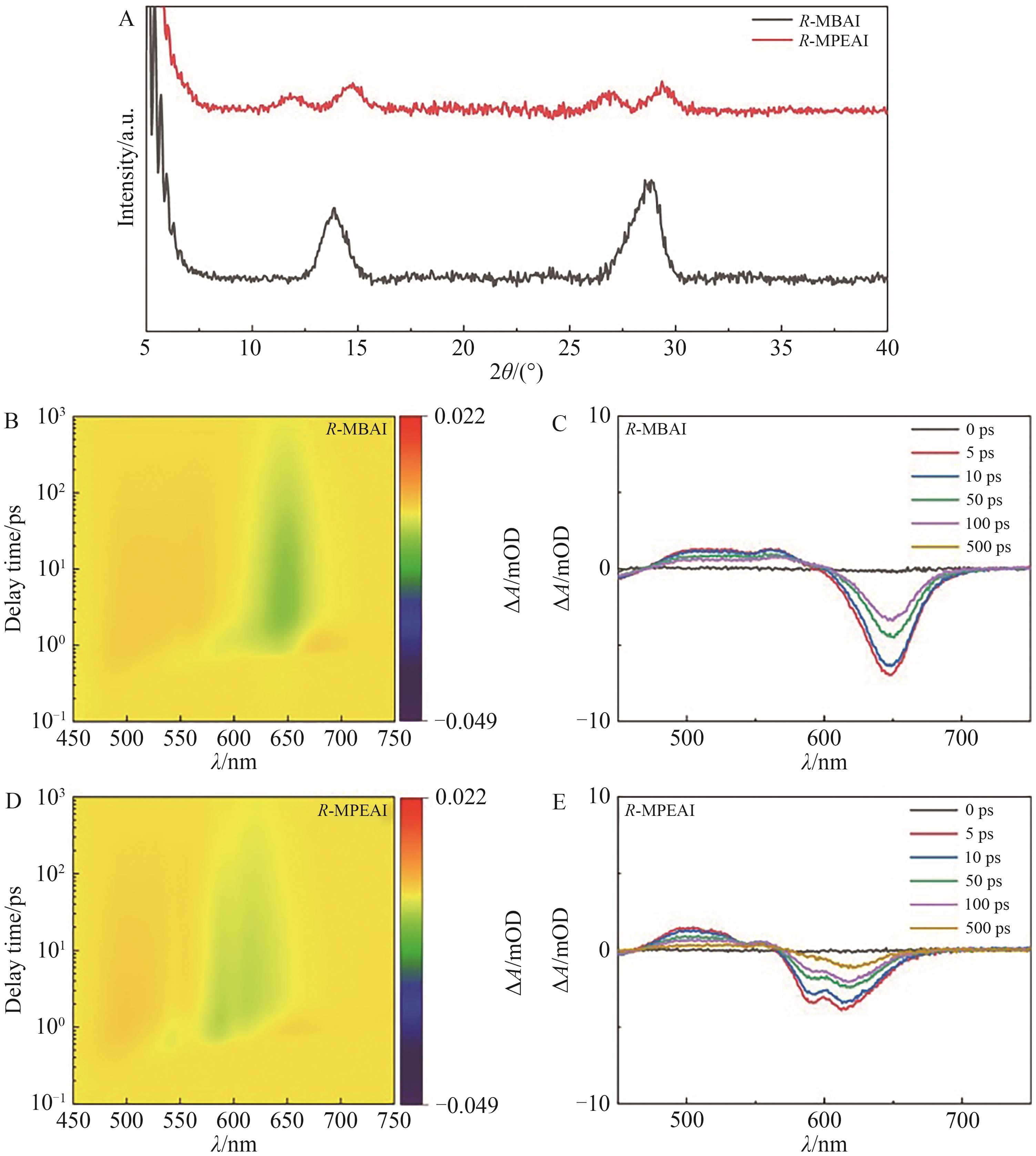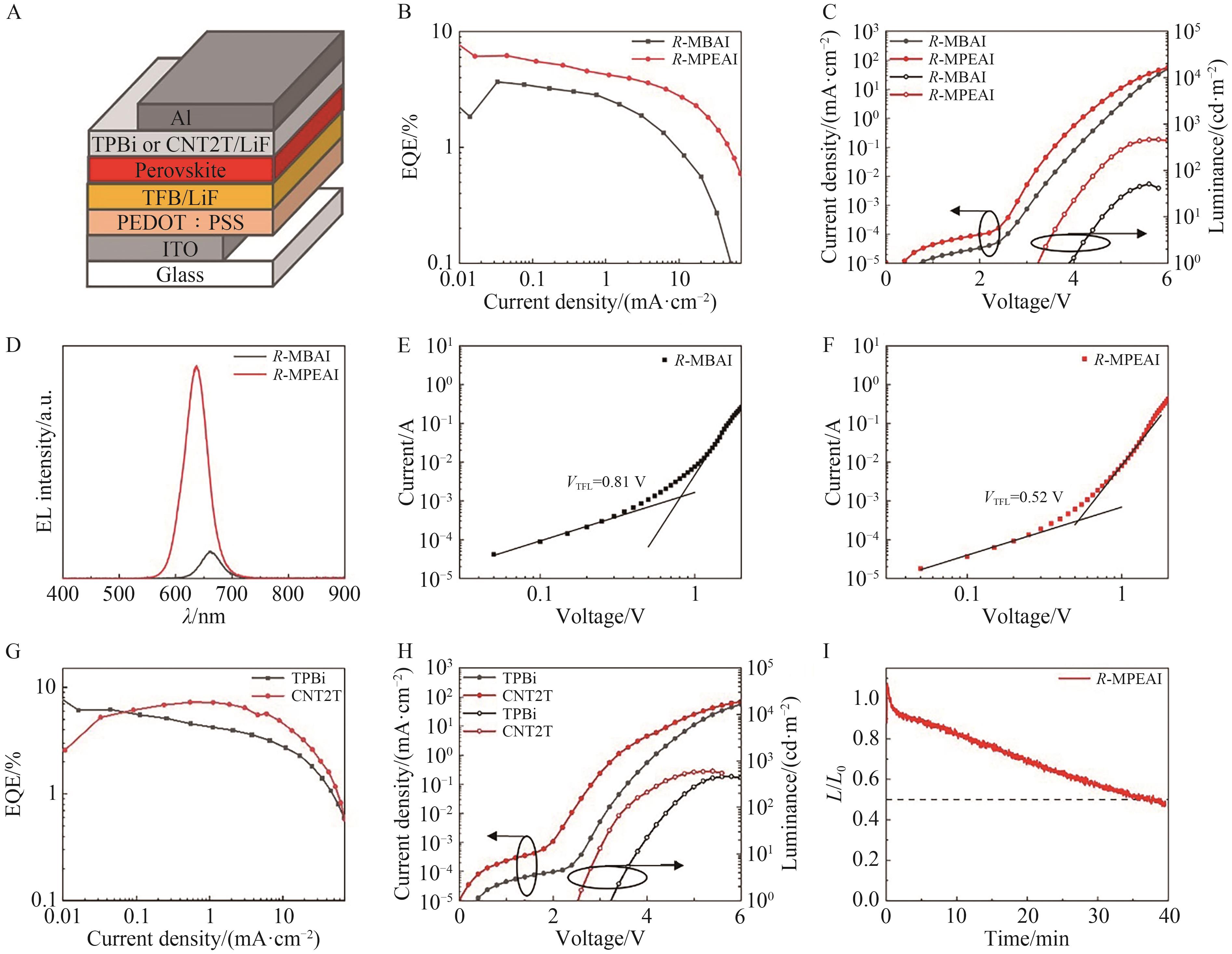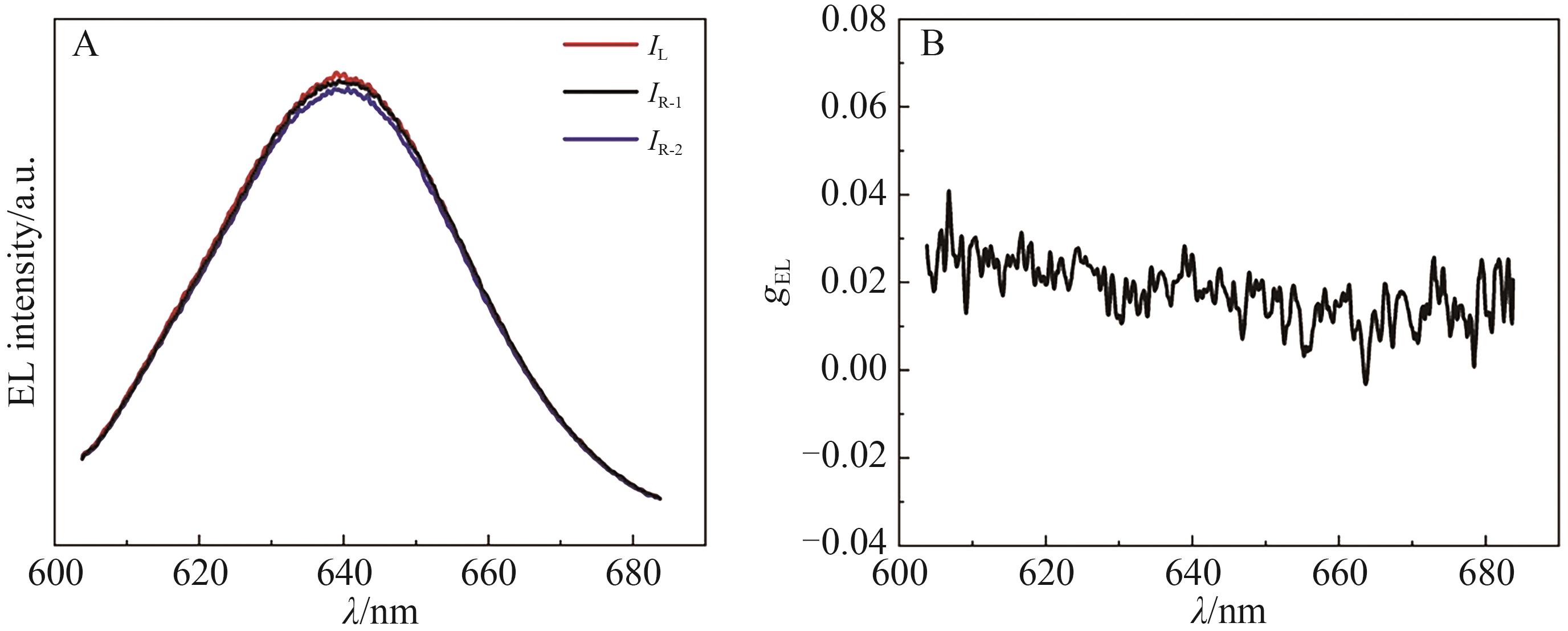| 1 |
DANG Y Y, LIU X L, CAO B Q, et al. Chiral halide perovskite crystals for optoelectronic applications[J]. Matter, 2021, 4(3): 794-820.
|
| 2 |
LU H P, VARDENY Z V, BEARD M C. Control of light, spin and charge with chiral metal halide semiconductors[J]. Nat Rev Chem, 2022, 6(7): 470-485.
|
| 3 |
FURLAN F, MORENO J M, GASPARINI N, et al. Chiral materials and mechanisms for circularly polarized light-emitting diodes[J]. Nat Photonics, 2024, 18(7): 658-668.
|
| 4 |
WANG J Y, MAO B R, VARDENY Z V, et al. Chirality induced spin selectivity in chiral hybrid organic-inorganic perovskites[J]. J Chem Phys, 2023, 159(9): 091002.
|
| 5 |
SU W, YUAN F L. Opportunities and challenges of chiral perovskites for spin-LEDs[J]. Trends Chem, 2022, 4(11): 965-968.
|
| 6 |
KIM Y H, ZHAI Y X, LU H P. Chiral-induced spin selectivity enables a room-temperature spin light-emitting diode[J]. Science, 2021, 371(6534): 1129-1133.
|
| 7 |
JANG G, YEON J D, SUNIHL M, et al. Core-shell perovskite quantum dots for highly selective room-temperature spin light-emitting diodes[J]. Adv Mater, 2023, 36(5): 2309335.
|
| 8 |
YE C Y, JIANG J W, ZOU S L, et al. Core-shell three-dimensional perovskite nanocrystals with chiral-induced spin selectivity for room-temperature spin light-emitting diodes[J]. J Am Chem Soc, 2022, 144(22): 9707-9714.
|
| 9 |
YAN X Y, CAO R, ZHANG R X, et al. Mixed-ligand chiral quasi-2D perovskites for standard and deep blue CP‐LEDs[J]. Adv Funct Mater, 2024, 34(51): 2410012.
|
| 10 |
YANG C H, XIAO S B, XIAO H, et al. Efficient red-emissive circularly polarized electroluminescence enabled by quasi-2D perovskite with chiral spacer cation[J]. ACS Nano, 2023, 17(8): 7830-7836.
|
| 11 |
YAO J W, WANG Z Y, HUANG Y L, et al. Efficient green spin light-emitting diodes enabled by ultrafast energy- and spin-funneling in chiral perovskites[J]. J Am Chem Soc, 2024, 146(20): 14157-14165.
|
| 12 |
LI B H, LI Y, YUAN W, et al. Chiral quasi‐2D perovskites based single junction spin-light-emitting diodes[J]. Adv Funct Mater, 2024, 35(7): 2415433.
|
| 13 |
LIANG C, GU H, XIA Y D, et al. Two-dimensional ruddlesden-popper layered perovskite solar cells based on phase-pure thin films[J]. Nat Energy, 2020, 6(1): 38-45.
|
| 14 |
YAN K Y, LONG M Z, ZHANG T K, et al. Hybrid halide perovskite solar cell precursors: colloidal chemistry and coordination engineering behind device processing for high efficiency[J]. J Am Chem Soc, 2015, 137(13): 4460-4468.
|
| 15 |
LIU Z, PENG X M, XING S Y, et al. Deep-red perovskite light-emitting diodes with external quantum efficiency exceeding 21% enabled by ligand-modulated dimensionality control[J]. Adv Opt Mater, 2022, 10(20): 2201123.
|
| 16 |
RUI H S, WU X, QIU Y, et al. Bifunctional bidentate organic additive toward high brightness pure red quasi-2D perovskite light-emitting diodes[J]. Adv Funct Mater, 2023, 33(52): 2308147.
|
| 17 |
ZHANG L, SUN C J, HE T W, et al. High-performance quasi-2D perovskite light-emitting diodes: from materials to devices[J]. Light: Sci Appl, 2021, 10(1): 61.
|
| 18 |
YU Y, TANG Y Y, WANG B F, et al. Red perovskite light-emitting diodes: recent advances and perspectives[J]. Laser Photonics Rev, 2022, 17(2): 2200608.
|
| 19 |
KYEONG C J, PRIYABRATA S, MIN M J. High-performance pure red perovskite light-emitting diodes utilizing conformational transformation of ionic liquid additive[J]. Nano Energy, 2024, 120: 109228.
|
| 20 |
LIU S P, KEPENEKIAN M, BODNAR S, et al. Bright circularly polarized photoluminescence in chiral layered hybrid lead-halide perovskites[J]. Sci Adv, 2023, 9(35): 5038.
|
| 21 |
WEI K Y, LIANG B, SUN C J, et al. Metal halide perovskites for red-emission light-emitting diodes[J]. Small Struct, 2022, 3(10): 2200063.
|
| 22 |
LIU S W, ZHAN H M, QIN C L, et al. Suppressing high-order phase for efficient pure red quasi-2D perovskite light-emitting diodes[J]. J Phys Chem Lett, 2022, 14(1): 73-79.
|
| 23 |
ZHANG D L, CHAO L F, JIN G R, et al. Highly efficient red perovskite light-emitting diodes with reduced efficiency roll-off enabled by manipulating crystallization of quasi-2D perovskites[J]. Adv Funct Mater, 2022, 32(36): 2205707.
|
| 24 |
LIU S W, ZHAN H M, QIN C L, et al. Controlling of precursor micelle size by ternary co-spacer cations for efficient pure red quasi-2D PeLEDs with recommendation 2020 color coordinates[J]. Chem Eng J, 2024, 479: 147886.
|
| 25 |
LIANG X F, LIU Z, ZHANG J B, et al. Promoting energy transfer between quasi-2D perovskite layers toward highly efficient red light-emitting diodes[J]. Small, 2022, 18(49): 2204638.
|
| 26 |
ADE K, CHIEN L C, JOHAN I, et al. Optimization of a triazine-based acceptor (CN-T2T) as the electron transport layer for highly efficient near-infrared perovskite light-emitting diodes[J]. J Mater Chem C, 2023, 11(34): 11564-11570.
|
| 27 |
LIANG T Z, CHIEN C L, WEI C L, et al. Aggregation control, surface passivation, and optimization of device structure toward near-infrared perovskite quantum-dot light-emitting diodes with an EQE up to 15.4%[J]. Adv Mater, 2022, 34(18): 2109785.
|
| 28 |
ZHAO F, WEI D H, NAN L S, et al. Iodotrimethylsilane as a reactive ligand for surface etching and passivation of perovskite nanocrystals toward efficient pure-red to deep-red LEDs[J]. Angew Chem Int Ed, 2023, 62(46): 202311089.
|
| 29 |
XI Z R, FEI T Y, YING Y C, et al. Efficient quasi-2D perovskite spin light-emitting diodes based on chiral-induced spin selectivity[J]. Chem Mater, 2024, 36(8): 3812-3819.
|

 ), 赵晨阳2, 程延祥1,2, 秦川江1,2(
), 赵晨阳2, 程延祥1,2, 秦川江1,2( )
)
 ), Chen-Yang ZHAO2, Yan-Xiang CHENG1,2, Chuan-Jiang QIN1,2(
), Chen-Yang ZHAO2, Yan-Xiang CHENG1,2, Chuan-Jiang QIN1,2( )
)




